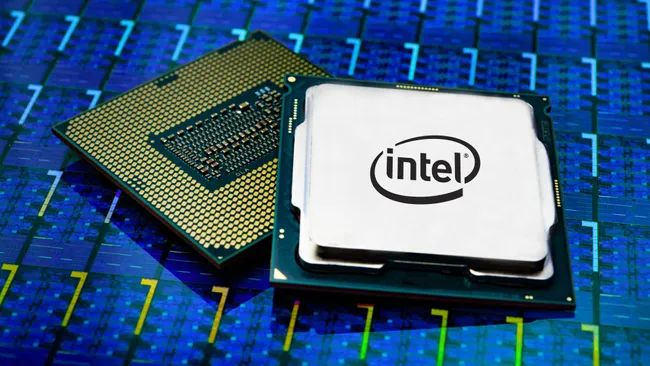In a bold attempt at clawing back from increasing losses and tumbling stock prices, Intel pulls off a remake with a strategic plan involving the Intel’s chipmaking business as a spin-off. This is expected to be a multi-billion dollar deal spearheaded by Intel CEO Pat Gelsinger himself, making the company more transparent financially and thus in a better position to focus on today’s competitive chip market.
Independent Intel Foundry
The most notable of these changes: the decision to make Intel Foundry a completely separate subsidiary. As Gelsinger said on Monday, the foundry required “clearer separation and independence” from the other aspects of Intel’s operations. This new subsidiary will operate from its own board, and its finances will be listed separately-an immense change for how Intel structures its business.
The move shows that Intel is serious about putting a much sharper focus on foundry services for external customers, positioning itself well in competition with industry leaders such as TSMC and Samsung. Giving more autonomy to Intel Foundry will, in fact, let the company be far more agile and efficient in its response to the market, which grows in demand for semiconductors.
Intel’s stock has taken a beating for the last couple of years, and 2023 continues to be a disaster. At one stage, operating losses peaked at US$7 billion in chipmaking alone. This new foundry structure could give investors the financial transparency needed to start a recovery.
Related Read: How TSMC Conquers the Chipmaking Universe
Scaling Back on Global Manufacturing
Intel also freezes some of its global manufacturing projects. The announcement was that it would cease building its factories in Poland and Germany for two years, basing their reason on expected market demand. All these steps have been in an effort to trim expenses without eliminating Intel from the crucial markets. However, Intel’s expansion effort in the United States remained unaffected. That includes factories in Arizona, Oregon, New Mexico, and Ohio, all part of the company’s aggressive building plans.
By doubling down on domestic production, Intel positions itself to claim U.S. government support-including a $3 billion funding award from the Biden administration to make chips for military use.
Related Read: How the U.S. is Ramping Up Domestic Chip Production
Selling Off Altera Stake and Shrinking Real Estate
Intel is about to sell some of its stake in Altera, a programmable chip company which it acquired as a wider strategy to pare down excess operations. Once touted as one of the fastest growth areas at Intel, programmable chips from Altera mark a partial retreat for the company as it shores up resources and focuses on core competencies.
It is also taking aggressive steps to shrink its worldwide real estate footprint by reducing two-thirds of its properties globally. The move underlines the determination of Intel to right-size all operations and get rid of superfluous assets in implementing its transformation plan.
Related Read: What is Altera, and Why Does Intel Own It?
Challenges in Intel’s Chipmaking Process
Intel is pinning quite a lot on the new 18A chipmaking process, but it has been facing considerable roadblocks. A recent report by Reuters specified that early tests to produce silicon wafers with the 18A process for Broadcom have not borne fruit. “Despite those challenges, Intel remains optimistic and plans to use the process starting next year for partners such as Microsoft and Amazon.
It is, therefore, cutting-edge technology that makes the difference in Intel’s future success competitive with other giants in semiconductor manufacturing. The 18A process would provide increased performance and reduced power consumption for the next line of chips requirements.
Related Read: Deep Dive: Chipmaking at Intel – 18A
Intel’s Financial Battle
Intel’s financial struggles are well documented; it racked up losses of $1.6 billion in its first quarter of 2024, where much blame was handed to its supposedly underwhelming chipmaking business. The layoffs announced this August, affecting 15,000 workers, were a stark reminder of the scale at which Intel faces challenges. According to Gelsinger, Intel is “more than halfway” toward the goal of downsizing.
Yet, all this doesn’t rattle the leadership of Intel. “This is, as I have said, the most profound transformation that has happened with Intel in more than four decades,” Gelsinger said. He compared the current changes to Intel’s successful transition from memory chips into microprocessors in the late 1970s, and expressed his confidence in the company emerging on top.
Related Read: How Intel’s Shift from Memory to Microprocessors Made It a Giant
Looking Ahead: Intel’s Future
Intel is spinning off its chipmaking business and making bold changes to its global footprint, while at the same time betting big on strategic partnerships with tech giants like Microsoft and Amazon. Indeed, such deals will be crucial in the quest for the chip leader to reclaim some of its former glory.
Whether Intel’s transformation will succeed or not remains to be seen, but there is little doubt that Gelsinger and his team are leaving no stone unturned in trying to reverse Intel’s fortunes and build a better future.
Related Read: Intel’s Vision to the Future of Chipmaking
Spinning off the Intel Foundry, reducing real estate space, and divesting its stake in Altera are the steps taken by Intel so far that create a better chance for its comeback. While many challenges still remain, bold and active steps taken in the transformation, with such an upcoming 18A chipmaking process, may translate into its fight to take back leadership within the semiconductor industry.
More News: Tech News


